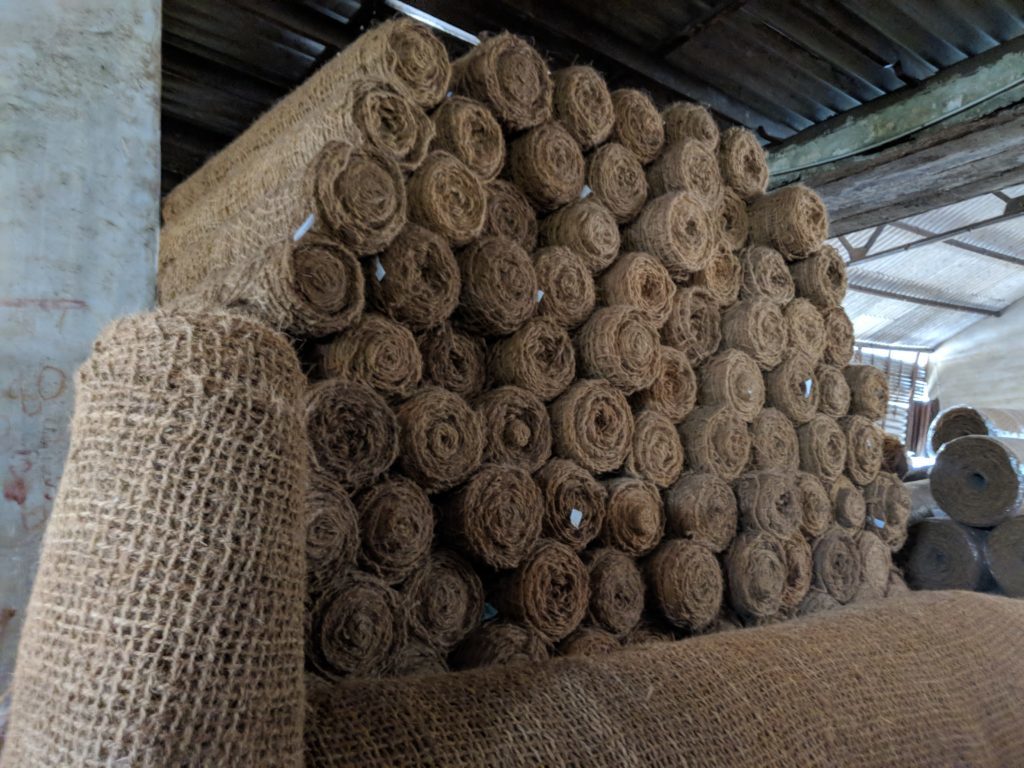In today’s environmentally conscious world, coir fibers are becoming more and more popular. Coir fiber, also simply known as coir, comes from the fibrous husk of the inner shell of a coconut. Creating coir takes time since the husks must soak until the fibers separate, but this material has many uses. While you may be familiar with coir and its use in stiff fiber doormats, it is now being used in many other ways.

These Are Rolls of Woven Natural Coir Soil Erosion Mitigation Mats.
Types
When it comes to coir, there are two different types of coir that can be used to make coir fiber: brown and white. Brown coir is the most common and comes from the inner shell of mature coconuts. It is dark in color and very strong. White coir, on the other hand, comes from unripened green coconuts and must soak in water for more than 10 months before the fibers separate. White coir is not as strong as brown coir but offers more flexibility.
Landscaping and Gardening
Coir is often used in gardening and landscaping projects. For example, coco coir peat looks and feels like traditional soil, but retains more moisture, thus keeping your plant roots from drying out. Coir also repels most insects, creating a natural pest management system for your garden.
Coco chips are often used in places where you would traditionally use bark chips. Because they help retain water, coco chips are great for mulching around trees. Coir woven textiles are applied to the ground in areas prone to erosion. The textile absorbs water, helps seed germination, and promotes new vegetation growth.
Ropes and Netting
White coir fibers are typically used for rope because of its strength and flexibility. White coir fiber also has a strong resistance to salt water, making it the perfect medium for making fishing nets, nets for shellfish harvesting and marine rope for boats.
Construction
In an effort to use renewable resources, the use of coir fiber in concrete instead of sand has proven beneficial in some circumstances. In addition to being a renewable resource, concrete made with coir offers thermal conductivity, permeability, and low drying shrinkage. These characteristics make it ideal for drainage applications. It does have a lower strength level than sand concrete but is strong enough for secondary structural use.
Coir ply is a substitute for traditional plywood and is made by combining coir fibers with resin and pretreated timber veneer. It creates a plywood alternative that offers abrasion resistance. Coir ply is more temperature stable than traditional plywood and resists contracting and expanding with extreme temperature changes.
Household Items and Furniture
Coir is also commonly used for rough, bristle welcome mats. This natural fiber is strong and helps remove dirt from shoes. In addition, coir fiber is rot resistant, making it excellent for outdoor use. Brown coir fibers are also used to make household brushes, such as toilet brushes and brooms. In addition to welcome mats, coir fibers are woven to make indoor and outdoor rugs. Brown coir fiber can also be bound together with natural latex and is layered in between the foam and polyester wadding to make mattresses.

Leave a Reply
You must be logged in to post a comment.